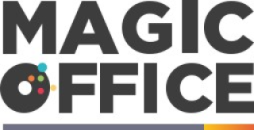
The Role of Leadership Newsletters in UK Companies
The Significance of Leadership Newsletters in Corporate Culture
The growing importance of communication within UK companies cannot be overstated, and leadership newsletters have become a pivotal tool for reinforcing this. These newsletters serve as a strategic platform for business leaders to articulate their vision, strategy, and thought leadership directly to their teams. The strength of leadership primarily lies in the ability to effectively guide and influence others, making clear communication essential. In an era of constant change, as seen in the evolving business landscape, maintaining an open channel of communication can significantly enhance engagement within the workforce. Leadership newsletters can bridge the gap between senior executives and employees by offering insights into company goals and updates, fostering a culture of transparency and trust. Furthermore, newsletters can act as a guide for leadership development by including practical advice and insights, providing employees with opportunities for growth and learning. On a weekly or monthly basis, business leaders can address topics such as business reviews and strategic decisions, which might otherwise skip the main content of day-to-day operations. However, the challenge remains how to craft compelling content that resonates with diverse audiences within an organisation. Newsletters must therefore evolve from mere bulletins to tools of engagement and empowerment. To delve deeper into overcoming the challenges of crafting newsletters that effectively engage employees and inspire action, refer to enhancing feedback collection with a 5-star Google form template. Efficient feedback mechanisms, as discussed in the linked resource, could provide insights for improving newsletter content and delivery. Through these newsletters, leaders transform from being distant figures into approachable guides, fostering a dialogue that not only informs but also inspires. By incorporating this approach, UK companies can cultivate effective leaders who are well-versed in both guiding teams and optimising performance outcomes through ongoing communication.Crafting Compelling Content for Leadership Newsletters
Creating Impactful Newsletter Content
In today's fast-paced business environment, crafting compelling content for leadership newsletters is essential to engage and inspire both the team and senior executives. These newsletters serve as a medium for leaders to share insights, provide updates, and foster leadership development within the organization. To begin with, it's important to consider the needs and interests of your audience. Business leaders and team members alike seek practical advice and thought leadership that can be applied to their work. Integrating a mix of insights from recent business review articles, like those from Harvard Business, can enhance the credibility and depth of the newsletter. Another effective strategy is to include a balanced mix of content types. Include a combination of industry trends, business analyses, and leadership guides to keep the content dynamic and engaging. For instance, consider varying your newsletter with sections featuring thought leadership, including leadership strategies for different months like "leadership march" or "leadership april." This periodic focus can help guide building a cohesive narrative throughout the year. A successful newsletter should also offer content that can be immediately actionable. Providing a "management day" tip each week or suggesting best leadership practices can motivate team members to implement changes in their day-to-day activities. Including a monthly review of key insights from leaders within the organization can also encourage participation and strengthen a sense of community. Furthermore, don’t overlook the power of storytelling. Sharing success stories and challenges from within the organization can humanize the newsletter, making it more relatable. Highlight practical examples of how business management has effectively tackled different situations. Lastly, consider addressing potential issues of workplace inclusivity. Offering a guide on subjects like ensuring workplace inclusivity can reflect a leader's commitment to a thoughtful and inclusive working environment. By thoughtfully curating content that combines expert insights with actionable advice, leadership newsletters become an invaluable resource, aligning the entire team around shared goals and inspiring action across the board.Frequency and Timing: Optimising Newsletter Delivery
Optimising the Delivery Schedule
Determining the ideal frequency and timing of leadership newsletters is a critical decision for ensuring they have the maximum impact. The right schedule promotes engagement and sustains interest, allowing business leaders to effectively communicate their strategic insights and updates. But how often should a newsletter be sent out to maintain this balance?
Weekly newsletters can be potent tools for fostering a continual flow of communication, helping leaders keep their teams informed with fresh, actionable content. Weekly dispatches are particularly effective in thought leadership roles where rapidly changing information needs immediate dissemination. However, they require a constant stream of relevant content, and business leaders must be prepared to commit the necessary resources to maintain momentum.
On the other hand, monthly newsletters may be appealing as they offer a more in-depth review. Launching a monthly newsletter allows for a more thorough discussion of new insights and reflection on business reviews. It is ideal for comprehensive leadership development strategies, leadership April reflections, or business reviews without inundating the readers.
The timing of distribution also plays a crucial role. Sending newsletters at the beginning of the week, like Monday or Tuesday, can catch recipients when they are most focused on planning and strategizing. Alternatively, the end of the week, such as Thursday or Friday, may allow readers the opportunity to digest the information at leisure. Each company’s unique business operations and reader preferences should guide this decision.
Leaders can explore and test different schedules, collecting feedback to adjust their approach. Effective leaders recognize the importance of flexibility in their communication strategy. As conditions evolve, so too should the methods of engagement, ensuring the team always feels informed, respected, and empowered in their roles.
Leveraging Technology for Newsletter Distribution
Utilizing Technology for Effective Distribution
In the digital age, leveraging technology is crucial for the efficient distribution of leadership newsletters. Business leaders can enhance their communication strategies by adopting various digital tools that streamline the process and ensure timely delivery. Here are some practical advice and insights on how to effectively use technology for newsletter distribution:
- Email Marketing Platforms: Platforms like Mailchimp or Constant Contact offer robust features for creating, scheduling, and sending newsletters. These tools allow leaders to segment their audience, ensuring that the right content reaches the right team members.
- Automation: Automation tools can be a game-changer for busy leaders. By setting up automated workflows, newsletters can be sent out without manual intervention, ensuring consistency and freeing up time for other leadership development activities.
- Analytics and Feedback: Most email platforms provide analytics that help measure the impact of newsletters. By analyzing open rates, click-through rates, and engagement metrics, leaders can refine their content strategy and improve future editions.
- Integration with Other Tools: Integrating newsletter platforms with other business tools, such as CRM systems or project management software, can enhance the personalization and relevance of the content delivered to each recipient.
By embracing these technological solutions, effective leaders can optimize the delivery of their leadership newsletters, ensuring that their insights and thought leadership reach their audience efficiently. This approach not only enhances communication but also supports the overall management and leadership goals of the organization.
Measuring the Impact of Leadership Newsletters
Evaluating the Effectiveness of Leadership Newsletters
In the dynamic landscape of UK companies, assessing the impact of leadership newsletters is crucial for continuous improvement. Business leaders must focus on analyzing how these communications contribute to leadership development and foster team engagement.- Feedback from Leadership and Teams: Gathering insights directly from both leaders and team members can offer practical advice on refining newsletter content. This feedback helps determine whether the main content aligns with the expectations of leadership thought and business development goals.
- Metrics Tracking: By employing modern technology, leaders can track newsletter performance through metrics such as open rates and click-through rates. Monitoring these can reveal trends like which topics resonate most with the audience, whether it's practical business strategies or thought leadership topics.
- Content Engagement: Observing how subscribers engage with newsletters can provide a qualitative measure of success. If there is a high level of engagement, whether through comments or follow-up actions, this indicates that newsletters effectively communicate management insights.
- Periodic Reviews: Conduct monthly or quarterly business reviews to evaluate the role of newsletters in achieving organizational objectives. These reviews can highlight areas for improvement and help ensure newsletters remain a beneficial tool for leadership communication.













